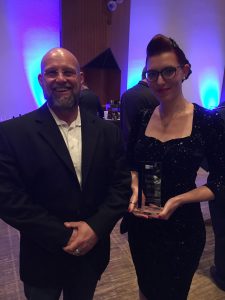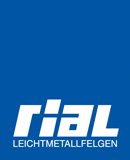Creating a Wheel on the Computer
 Christian Weimer, designer at Superior Industries, gives us exciting insights into his everyday working life.
Christian Weimer, designer at Superior Industries, gives us exciting insights into his everyday working life.
1. What does your work as a designer in the wheel industry look like?
The tasks and challenges are unbelievably diverse. But in a nutshell: a designer implements the wishes and standards for the design and technical characteristics of a project concretely at the technical level. This requires us to consider the customer’s desires as well as technical factors and other parameters.
2. What are your most important tools? To what extent is everything done on the computer these days?
We now use the PC for virtually all process steps. I’d estimate that 95 percent of my work is done digitally, so the computer has become indispensable for my daily work. I should note here that we use a range of different software programs to implement different individual design aspects. This makes working on the computer quite varied.
3. Which design steps does a product go through with you?
We first discuss the design ideas and other requirements. Along with the technical specifications, such as wheel size and offset, this forms the basis for the first design draft. The first draft is then checked for compatibility with other technical requirements such as brake contours or the bolt circle and adjusted if necessary. After that we create a 3D data set, which serves as a basis for the final conclusion of our sales team and / or the customers. As soon as the design is approved, concrete instructions for tools, production processes as well as for wheel drawing get implemented. Latter do also form the framework for the homologation of the wheel concerning TÜV and KBA.
4. How long does it take on average to go from the initial idea to serial production?
That usually takes 12 to 16 weeks. Quite a few design steps must be taken care of within these three to four months.
5. Where do you get your ideas from? What drives you?
I mainly get my inspiration from everyday life. Of course I also keep an eye out for new ideas on the Internet and read trade journals to collect new impressions. But there is generally inspiration to be found everywhere, such as in nature or architecture.
My motivation at work is to make RIAL better than our competitors. This guiding principle drives me to work creatively and professionally.
6. Which tasks do you handle as a team, and which ones do you do alone?
I fundamentally view myself as a team player. The design implementation and creation of drafts are always teamwork. Creativity plays a big role in these steps, and the mutual exchange of ideas makes for quicker, better progress. My team is made up of amazing colleagues whose different ideas lead to a great result in the end.
7. What unique challenge does wheel design entail?
The challenge lies in the fact that the end product must fulfill numerous criteria: the finished wheel design must be innovative in terms of both aesthetics and design technology, but not at the expense of its functionality. The wheel should be not only pleasing to the eye, but also weight-optimized and easy to care for. It is not always easy to find the right balance between all of these various aspects, but I think we’ve always done a good job up to now.
8. What does it feel like when you see one of your alloy wheel designs “out in the wild” on an elegant vehicle?
It makes me happy and proud, of course. It also lets me know that the customer has good taste! ;)


